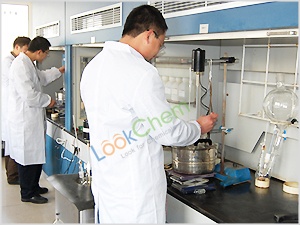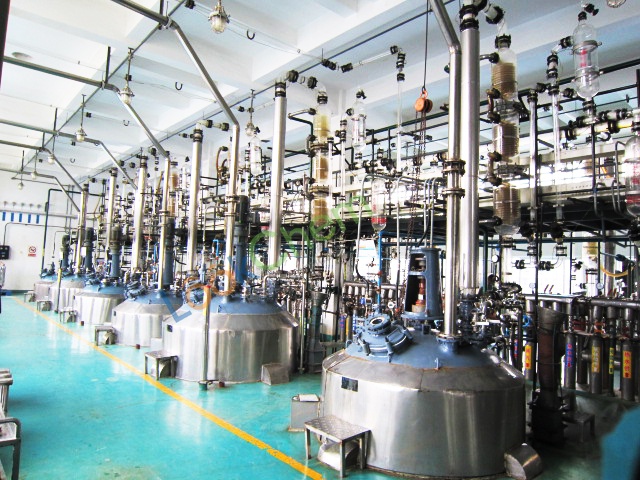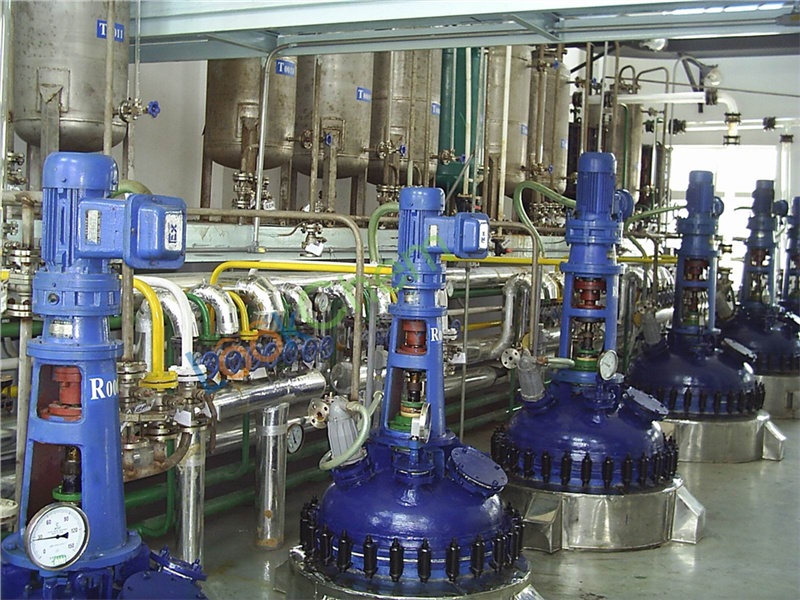Capecitabine msds
- Product Details
- Company Profile
The material safety data sheet (MSDS) is one important component for product stewardship and workplace safety. You could refer to its for more detailed product information. And Capecitabine msds below is provided by Nanjing Aily Biotechnology Co.,Ltd., which is one leading Capecitabine product producer and experienced in chemical manufacturing and custom synthesis.
Capecitabine
1. Product and Company Identification
Product name: Capecitabine
2. Composition/Information on ingredients
Characterization: pharmaceutical active substance in the group of fluorinated
cytosines
Chemical name:- 5’-Deoxy-5-fluoro-N4-pentyloxycarbonyl-cytidine
Synonyms- XELODA
- NeoFurtulon successor
- N-[1-(5-Deoxy-β-D-ribofuranosyl)-5-fluoro-1,2-dihydro-2-oxo-4-pyrimidinyl]-n-pentyl carbamate
CAS number: 154361-50-9
UN number: 3077
Roche number: Ro0091978-000
Empirical formula: C15H22FN3O6
3. Hazards identification
Most important hazards
- Irritating to eyes and skin.
- May cause cancer.
- Toxic to aquatic organisms, may cause long-term adverse effects in the aquatic environment.
- May cause harm to the unborn child.
Note
- Cytostatics in general have to be classified as potentially carcinogenic, teratogenic and mutagenic. During handling any occupational exposure as well as environmental contamination have to be avoided.
4. First-aid measures
Eye contact
- rinse immediately with tap water for 10 minutes - open eyelids forcibly
- consult a physician if irritation persists
Skin contact
- remove immediately contaminated clothes, wash affected skin with water and soap - do not use any solvents
- consult a physician if skin irritation persists
Inhalation
- remove the casualty to fresh air and keep him/her calm
- consult physician
Ingestion
- summon a physician immediately
- let drink repeatedly plenty of water and induce vomiting (only if conscious), repeat several times
Note to physician
- treat symptomatically
- in case of accidental exposure, keep a sample of urine in order to determine the content of fluoro-β-alanine
5. Fire-fighting measures
Suitable extinguishing media
- water spray jet, dry powder, foam, carbon dioxide
Specific hazards
- formation of toxic and corrosive combustion gases (hydrogen fluoride, nitrogen oxides) possible
- consider danger for the environment: dike spilled liquid
- consider dust explosion hazard
Protection of fire-fighters
- precipitate gases/vapours/mists with water spray
- use self-contained breathing apparatus
- avoid skin contact
6. Accidental release measures
Personal precautions
- evacuate area, remove sources of ignition, ventilate
- keep people away and stay on the upwind side
Environmental protection
- avoid release to the environment
Methods for cleaning up
-- collect spilled material (avoid dust formation) and hand over to waste removal in sealed containers
- clean floors and contaminated objects with plenty of water
- collect spilled solutions with inert adsorbent and hand over to waste removal
7. Handling and storage
Handling
Technical measures
- processing in closed systems, if possible superposed by inert gas (e.g. nitrogen)
- local exhaust ventilation necessary
- avoid dust formation; very high dust explosion hazard
- take precautionary measures against electrostatic charging
Storage
Storage conditions
- room temperature
- store in a dry place
Validity
- 24 months, at room temperature
- see expiry date on the label
Packaging materials
- tightly closing; material: stainless steel, aluminium, enamel, glass, plastic
8. Exposure controls/Personal protection
Engineering Measures
- see 7.
Monitoring Threshold value (Roche) air
- IOEL (Internal Occupational Exposure Limit): 0.01 mg/m3 (definedas 8-hour time-weighted average)
Personal protective equipment
Respiratory protection
- in case of open handling or accidental release: particle mask or respirator with independent air supply
Hand protection
- protective gloves (eg made of neoprene, nitrile or butyl rubber
Eye protection
- safety glasses
Body protection
- protective clothing
General protective and hygiene measures
- instruction of employees mandatory
- shower after work recommended
9. Physical and chemical properties
Colour: white to light yellow
Form: powder
Odour: odourless
Bulk density: ~ 0.2 g/cm3
Solubility:
26’000 mg/l, water (20 °C)
207’000 mg/l, ethanol (20 °C)
> 40 %, methanol
11.8 %, acetonitrile
> 59 %, dimethyl formamide
2.5 %, ethyl acetate
Partition coefficient: log Pow ~ 4.5 (n-octanol/water) pH 7.4
Dissociation constant: pK1 =8.8 (acidic group(s))
Melting temperature: 116 to 117 °C
10. Stability and reactivity
Stability
- stable under the conditions mentioned in chapter 7
Conditions to avoid
- temperatures above 100 °C (decomposition)
Materials to avoid
- strong acids (hydrolysis)
11. Toxicological information
Sensitization
- slightly sensitizing (several species)
Subchronic toxicity
- high doses may damage proliferating cells (e.g., bone marrow,
leukocytes)
Mutagenicity
- may cause mutations in vitro (clastogenic effect in lymphocytes)
- lymphocyte test; evidence of clastogenicity
Reproduction toxicity
- suspected to be teratogenic and to lower parental fertility
- decreased weight of testis and epididymis, decrease and
degeneration of spermatocytes and spermatids (760 mg/kg/d;
oral, mouse, male)
- reduced mating ability and fertility rate (760 mg/kg/d; oral, mouse,
female)
NOTE
- may cause diarrhoea, nausea, vomiting, loss of appetite, irritation of mucous membranes and alteration of the haemopoietic system (leukopenia) in dependance of the dose
- cytostatics are potentially carcinogenic
12. Ecological information
Inherent biodegradability
- inherently biodegradable evidence for prior abiotic primary degradation as a rate-limiting process
29 %, 28 d
44 %, 56 d
55 %, 84 d
(MITI Test II, OECD No. 302 C)
Abiotic degradation
- slow degradation, probably ester hydrolysis (30 mg/l; HPLC)
t1/2 ~ 21 d, ~ 22 °C, pH ~ 7
- rapid degradation only at very acidic pH (1000 mg/l, water; HPLC)
t1/2 ≥ 60 h, ~ 22 °C, pH 2
t1/2 ~ 6 h, ~ 22 °C, pH 1
t1/2 < 2 h, ~ 22 °C, pH 0.5
t1/2 ~ 1 h, 30 °C, pH 0.5
Ecotoxicity
- strongly toxic for algae (Selenastrum capricornutum)
EbC50 (72 h) 0.58 mg/l
ErC50 (72 h) 2.0 mg/l
NOEC (72 h) 0.14 mg/l
(OECD No. 201)
- barely toxic for planktonic crustaceans (Daphnia magna)
EC50 (48 h) > 850 mg/l
NOEC (48 h) 500 mg/l
- barely toxic for fish (rainbow trout)
LC50 (96 h) > 867 mg/l
NOEC (96 h) 867 mg/l
- barely inhibitory on aerobic bacterial respiration
EC50 > 1000 mg/l
(Activated Sludge Respir. Inhib. Test, OECD No. 209)
Mobility
- medium adsorption to activated sludge, medium mobility (water-activated sludge, 3 h)Kd = 272 l/kg (activated sludge)(Adsorption to activated sludge in biodegradability test)
Note
- strictly avoid contamination of the environment
13. Disposal considerations
Waste from residues
- observe local/national regulations regarding waste disposal
- incinerate in qualified installation with flue gas scrubbing
14. Other information
Use
- pharmaceutical active substance (cytostatic)
Verified Supplier
NANJING AILY BIOTECHNOLOGY CO.,LTD
- Country:
 China (Mainland)
China (Mainland) - Business type: Lab/Research institutions
- Integral:


Contact Details|Similar Products

Escrow ServiceMore
Secure Your Orders With escrow More Transparency,Less Uncertainty


 Add to inquiry cart
Add to inquiry cart



